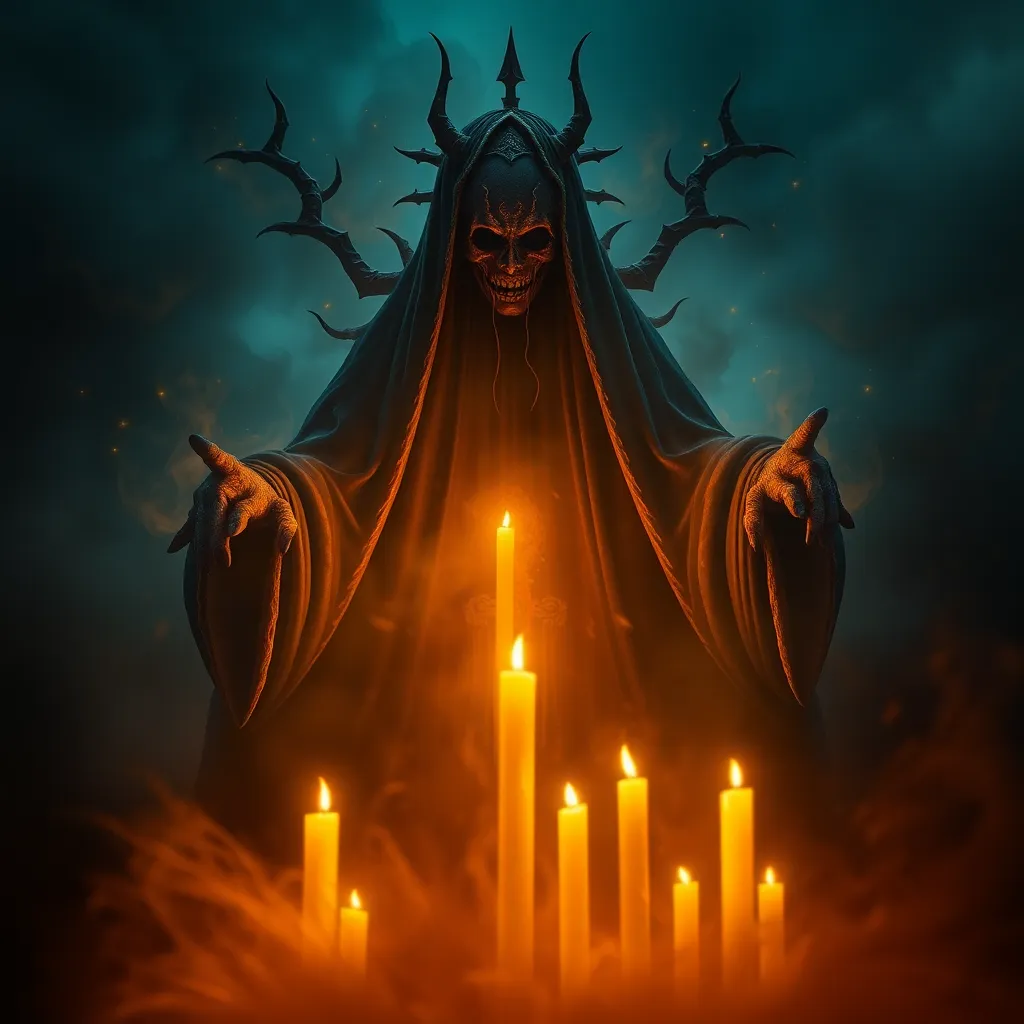The Dybbuk’s Awakening: Exploring the Origins and Motives of the Possessing Spirit
I. Introduction
The Dybbuk is a fascinating figure in Jewish folklore, often depicted as a malicious spirit that possesses the living. This concept has deep roots in Jewish mysticism and has captured the imagination of many for centuries.
Significant in Jewish culture, the Dybbuk embodies fears and aspirations regarding the soul, the afterlife, and unresolved conflicts. The purpose of this article is to explore the origins and motives of the Dybbuk, shedding light on its complex nature and enduring relevance.
II. Historical Context of the Dybbuk
The origins of the Dybbuk can be traced back to Jewish mysticism and Kabbalah, where the soul’s journey after death is a central theme. In these mystical traditions, it was believed that a soul could become trapped between this world and the next, leading to the emergence of the Dybbuk as a possessing entity.
Over time, the Dybbuk evolved through folklore and storytelling. Tales of Dybbukim (plural of Dybbuk) became a part of Jewish oral tradition, often serving as cautionary tales that addressed moral and ethical dilemmas.
In modern Jewish identity, the Dybbuk occupies a unique place. It resonates with themes of survival, spirituality, and the human condition, making it a relevant figure in contemporary discussions about Jewish heritage.
III. The Nature of the Dybbuk
The Dybbuk is characterized by its ability to possess a living person, typically seeking to fulfill its own desires or unfinished business. Unlike other spirits in folklore, the Dybbuk is often portrayed as a specific, identifiable soul rather than an abstract or malevolent force.
Some key characteristics of the Dybbuk include:
- Personality: The Dybbuk often retains the personality and memories of the deceased individual it embodies.
- Motivation: It is driven by unfulfilled desires, vengeance, or unresolved conflicts.
- Behavior: Possession can manifest in erratic behavior, sudden personality changes, and sometimes violent outbursts.
Common traits associated with possession include speaking in different languages, displaying knowledge of the deceased’s life, and exhibiting physical symptoms such as convulsions or catatonia.
IV. Origins of the Dybbuk
Early texts and references to the Dybbuk can be found in Jewish literature, notably in the writings of the 16th-century Kabbalist Rabbi Isaac Luria. His teachings provided a framework for understanding the soul’s journey and the concept of possession.
The role of the soul and afterlife is central to Dybbuk mythology. It is believed that when a person dies with unresolved issues, their soul may linger, seeking resolution through possession. This idea is deeply intertwined with Jewish beliefs about the afterlife and the importance of living a righteous life.
Cultural influences from surrounding traditions also shaped the Dybbuk’s narrative. The concept of restless spirits is not unique to Judaism; it shares similarities with other cultures, including the beliefs in ghosts in Christian and Islamic traditions.
V. Motives Behind Possession
The motives behind a Dybbuk’s possession can be categorized into several themes:
- Unfulfilled desires: The Dybbuk may seek to fulfill desires that were left unresolved at the time of death.
- Vengeance: A Dybbuk may possess an individual to exact revenge on those who wronged them in life.
- Psychological interpretations: Some scholars argue that Dybbuk possessions can be viewed through a psychological lens, representing unresolved trauma or mental illness.
These motives reflect the complex interplay between the spiritual and psychological realms, raising questions about the nature of the self and the impact of unresolved conflicts.
VI. Case Studies and Anecdotes
Throughout history, there have been numerous accounts of Dybbuk possessions, each adding to the rich tapestry of Dybbuk lore. One notable case is the story of the Dybbuk of Rabbi Elimelech, which describes a rabbi’s struggle to rid a young woman of a Dybbuk that was causing her distress.
Famous Dybbuk-related narratives have also been immortalized in literature and theater. One of the most well-known is S. Ansky’s play “The Dybbuk,” which tells the story of a bride possessed by her dead lover’s spirit, highlighting themes of love, loss, and the afterlife.
Modern interpretations of the Dybbuk have appeared in various forms of media, including films and novels, often exploring the psychological aspects of possession and the human condition.
VII. The Dybbuk in Contemporary Culture
The Dybbuk’s influence can be seen in contemporary film and literature, where it serves as a symbol of unresolved issues and the struggle for identity. Films like “The Possession” and adaptations of “The Dybbuk” play with the themes of possession and the supernatural, attracting a wider audience.
There has been a resurgence of interest in Jewish mysticism, with many exploring the deeper meanings behind Dybbuk lore. This interest often intersects with discussions of spirituality and mental health, as societal perceptions about possession evolve.
Societal perceptions of possession have shifted over time, with many now viewing it through a psychological lens, emphasizing the importance of mental health awareness and understanding the complexities of human behavior.
VIII. Conclusion
In summary, the Dybbuk is a multifaceted figure with deep historical roots and complex motives. Its origins in Jewish mysticism and folklore reveal much about cultural beliefs regarding the soul and the afterlife. The Dybbuk continues to resonate in contemporary culture, influencing literature, film, and discussions about mental health.
The lasting impact of the Dybbuk in cultural consciousness reflects our ongoing fascination with the unknown aspects of the human experience. As interest in Jewish mysticism and folklore grows, future research may uncover new insights into the Dybbuk’s legacy and its significance in both historical and modern contexts.



